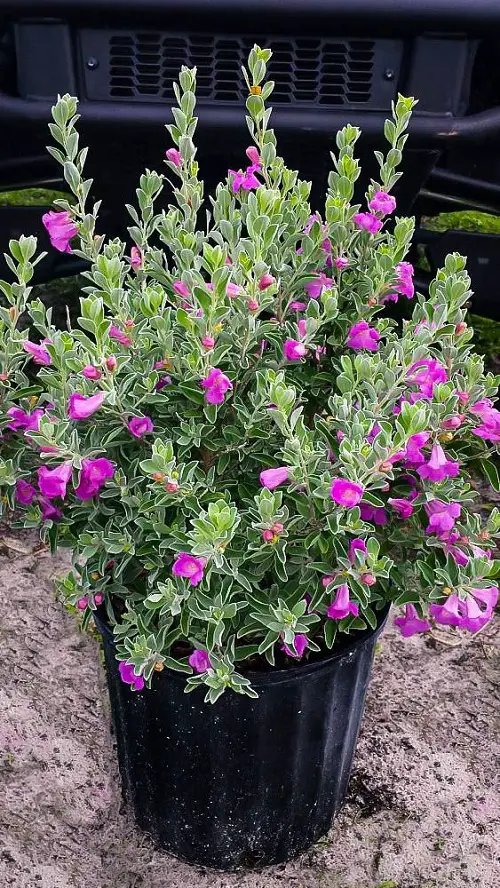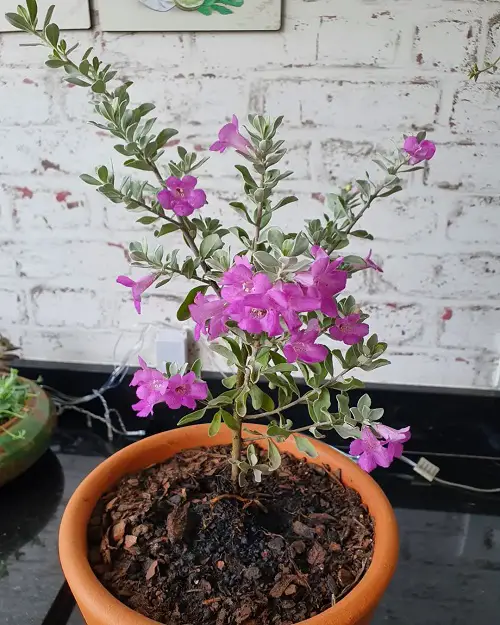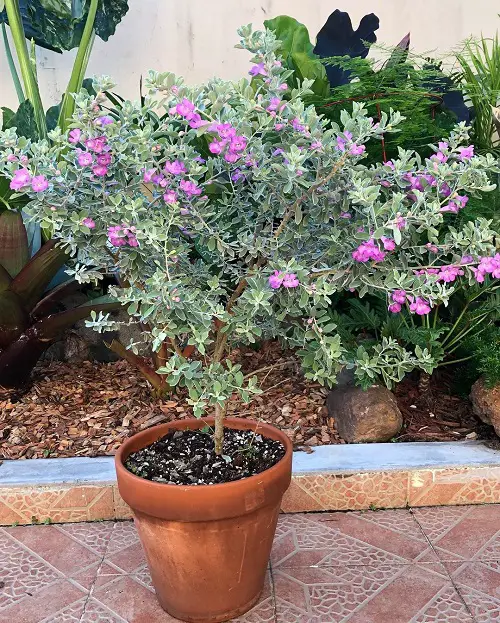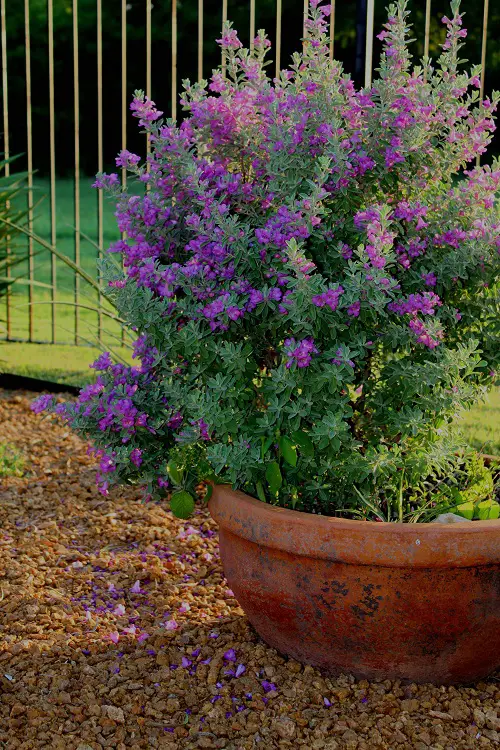Texas Ranger Plant stands out with its magnificent blooms! Here are all the details on How to Grow Texas Sage Plant in Pot!

Texas Ranger Plant is a beautiful specimen that stands out with its light green foliage and matching pink flowers. If you want to add it to your plant collection, keep reading to learn How to Grow Texas Sage Plant in Pot!
Botanical Name: Leucophyllum frutescens
USDA Zones: 7-10
Read How to Grow Texas Star Hibiscus here
Texas Ranger Plant Information
Also popular as Purple Sage, Texas Sage, Texas Silverleaf, Cenizo, Silverleaf, and Texas Barometer Bush (Leucophyllum frutescens) is an evergreen, dense shrub famous for soft, silver leaves and rose-purple blooms. The plant is native to the regions of Texas and Mexico.
The flowers attract bees and hummingbirds. This low-maintenance plant is an ideal choice for shrub and perennial borders or large pots. It grows upto 5-8 feet tall and 4-6 feet wide.
How to Grow Texas Sage in a Container?

You can propagate the texas ranger plant from cuttings at any time of year. Just take 4-6 inches-long softwood cuttings after flowering finishes in summer.
Plant it in a well-draining potting mix, water well, and keep it where it gets dappled light. The cuttings will form roots in 3-4 weeks.
Choosing a Pot
Depending on the root ball of the plant, an 8-10 inch pot will be good to start. Later, based on the growth and spread, keep repotting in a one-size bigger container.
Requirements for Growing Texas Sage Plant

Location
For blooms, ensure that the plant gets a minimum of 4-6 hours of bright sunlight every day. It won’t mind being in the shade but won’t flower as much.
For best blooms, make sure it gets as much sunlight as possible.
Soil
This plant likes neutral to alkaline soil with a pH between 6.5 to 8.5. Amend the garden soil with plenty of organic matter and compost at the time of planting.
Water
Texas sage is a drought-resistant plant that does not need regular watering. Water the plant when the topsoil feels a little dry to the touch.
Taking Care of Texas Sage Plant

Fertilizer
This plant is not a heavy feeder, but you can encourage flowering by adding 1-2 handfuls of leaf compost or vermicompost once in 1-2 months.
Using a balanced liquid fertlizer, diluted to 1/2 of its strength, once in 3-4 weeks is beneficial too.
Pests and Diseases
Cotton root rot or Ozonium root rot can impact the plant, triggered by overwatering. In pests, be careful of aphids and spider mites.


